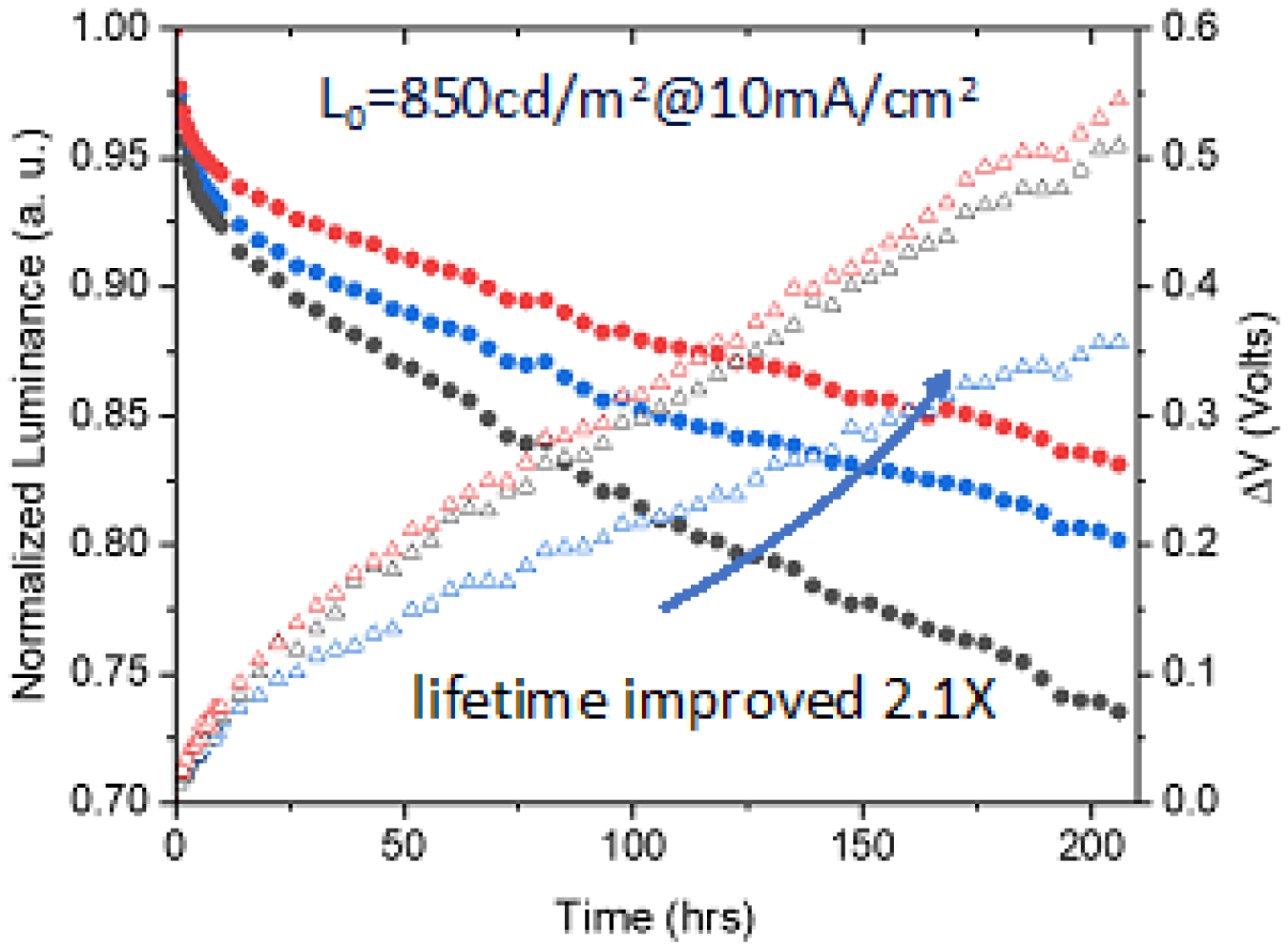
Improved luminance lifetime of blue-emitting phosphorescent OLEDs (PHOLEDs) in various microcavity environments. Black data: Conventional PHOLED. Blue data: Weak optical cavity. Red data: Strong optical cavity devices. Also shown is the change in voltage with operational lifetime.
The efficiency and operational lifetime of white organic light emitting devices (WOLEDs) is limited by the performance of the high-efficiency blue triplet-emitting OLED component. Researchers at the University of Michigan and University of Southern California are teaming to develop a new class of blue triplet emitting molecules with exceptionally short radiative decay times, along with further reduction of radiative lifetimes by the Purcell effect (i.e., creating optical environments that reduce the lifetime by coupling of the OLED optical modes with the excitonic state). Experimental and analytical investigations resulting from this work should yield a new generation of robust molecules and device structures useful for high-intensity WOLED sources.
The team has made significant progress during the early stages of the project. First, using optical cavities, they have designed devices with a Purcell factor (PF) >5. This is important because increasing the PF leads to a decrease in radiative lifetime, and thus reduced exciton density in the emissive layer. Since a high exciton density leads to a high triplet annihilation rate, this strategy results in increased device lifetime. Consequently, the team has demonstrated a 2.1x enhancement in blue phosphorescent device lifetime through use of these optical microcavity device designs.
A second means to increase device operational lifetime is to decrease the radiative lifetime of the emitting molecules. The team has designed and synthesized an extraordinary family of thermally activated delayed fluorescent “coinage metal” molecules (i.e., molecules based on Au, Ag, and Cu atoms) with high efficiency, yet with lifetimes as short as 300 nanoseconds. These materials have been used in blue emitting OLEDs with internal efficiencies approaching the theoretical maximum of 100%. Both approaches can work synergistically in devices to deliver maximum performance improvements. (September 2022)
Return to Research Highlights.

